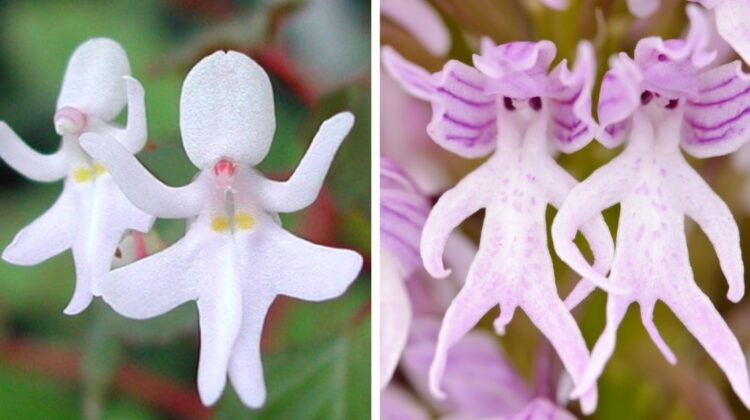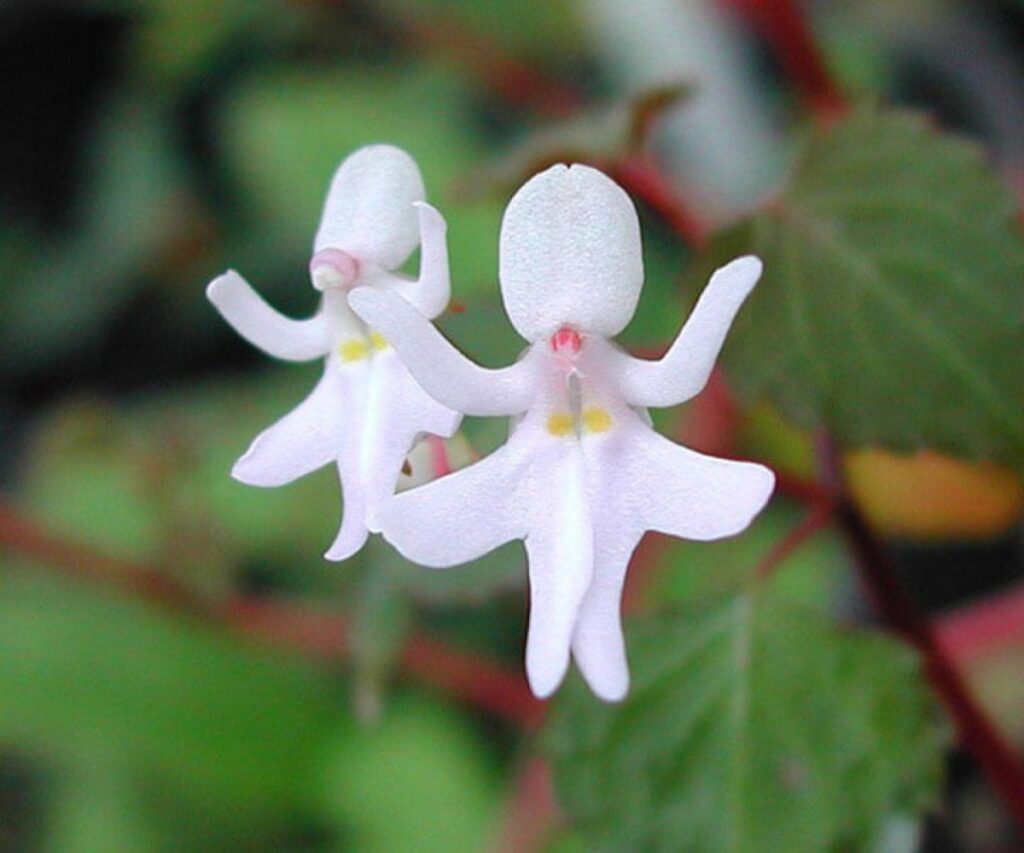The World’s Strangest Flowers That Look Like Something Else
We usually appreciate the appearance of flowers that seem like flowers, yet they can sometimes deceive us. Especially when they disguise themselves as other natural things, such as a white dove, a dancing girl, or even a nude male… Here are some of the strangest-looking flowers on the planet that seem like something (or someone).
Orchid with a naked man (Orchzis Italica)
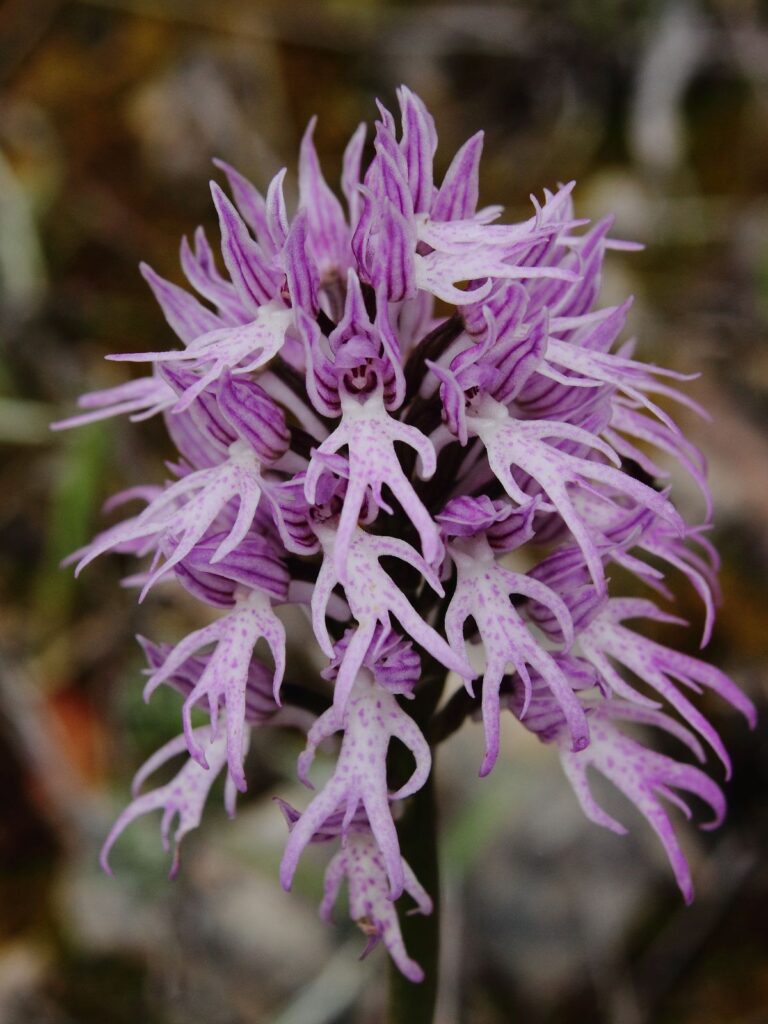
Nude Man Orchids, also known as Hanging Man Orchids, are Mediterranean orchids that resemble little hanging naked men down to the least detail. They come in a variety of sizes (as is typical with nude guys) and colors ranging from light purplish white to deep purplish-pink. The plant is endangered, possibly as a result of its use as an antidiarrheal, antiflatulent, and aphrodisiac. Salep, commonly known as Turkish Delight, is made with these colorful blossoms.
Girls Dancing (Impatiens bequaertii)
Even the most dedicated plant collector will struggle to locate these! These men are known for their similarity to dancing ladies in gowns, and they are among the rarest flowers. The plant itself is relatively little, measuring approximately one foot across and having flowers that are up to 12 inches long. It’s native to east Africa and comes in white and light pink, but it’ll root anywhere it touches the ground. As a result, if you can locate one, it makes a wonderful indoor plant.
Weber’s Lithops (Lithops comptonii)
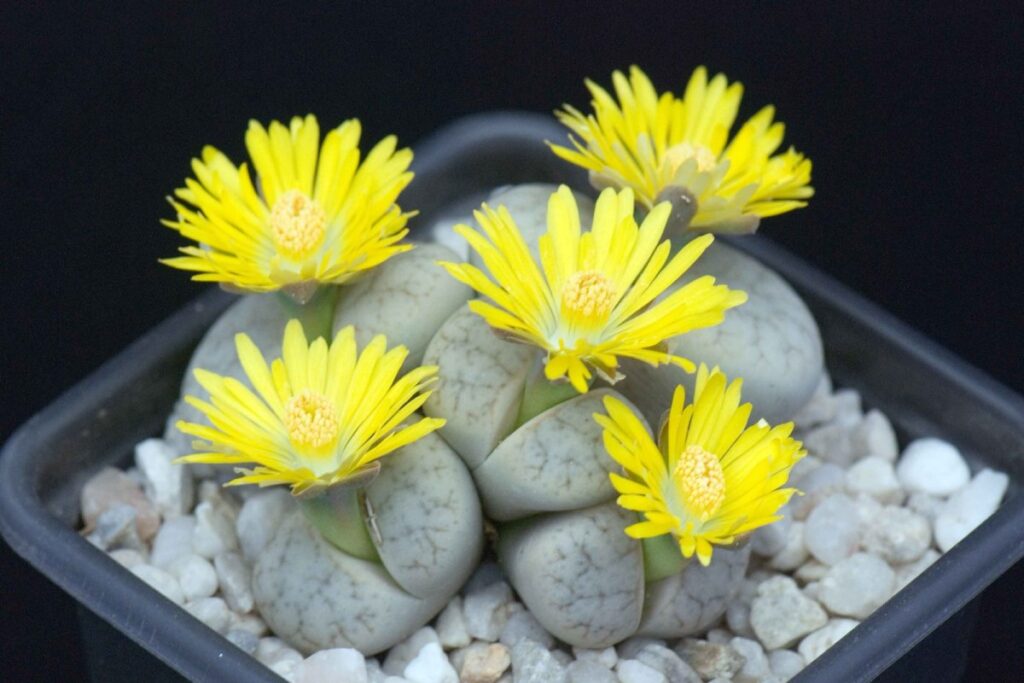
A stone that blooms? Yes, absolutely. Lithops Weberi, often known as Living Stones, are ideal for growing indoors, especially for those with less-than-green thumbs. Only found in South Africa, their development has transformed them into a drought-resistant plant. When the plant blooms, it looks odd, with a white or yellow daisy protruding from what appears to be solid stone. Do you want to increase the number of Living Stones you have? Simply pick a leaf from one and place it in the pebble bed, and you’re done. It’ll take hold. Period.
Orchid of the Flying Duck (Caleana major)

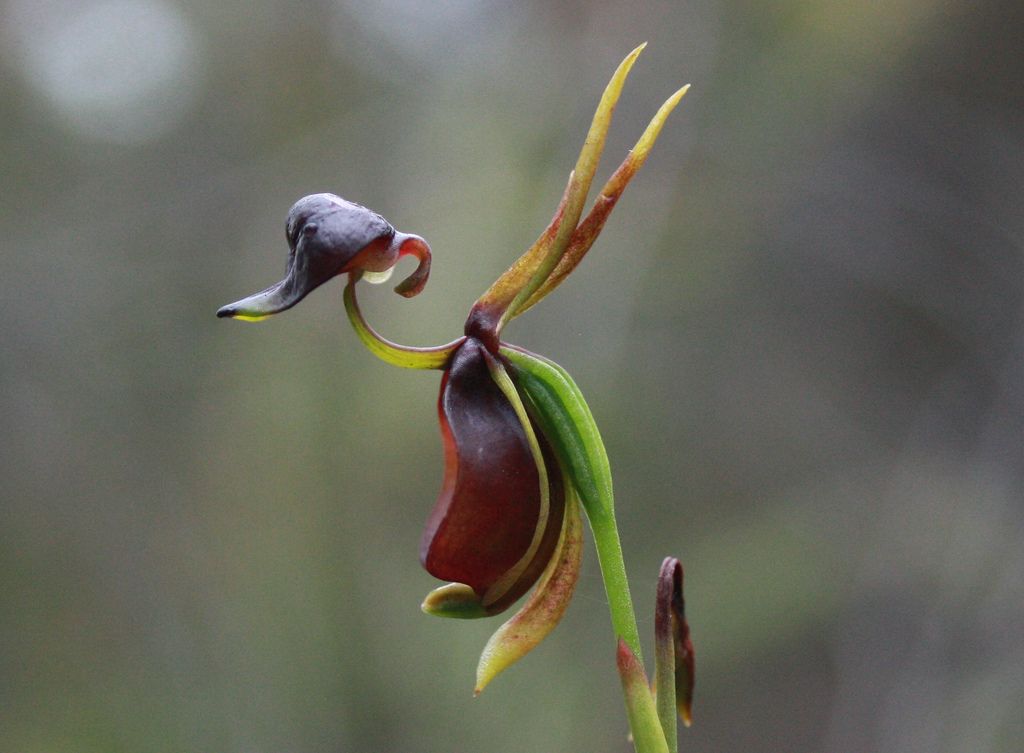
What gives this orchid its unusual duck shape? It aids in the pollination of the plant. Its aroma attracts sawflies, which settle on the “bill,” where their weight drives them down and into the flower, curling the “bill” down and in for a short time. The only route out is through a pollen-laden part of the flower, where the sawfly eventually finds itself and emerges. Despite its form, this orchid is difficult to spot because of its reddish brownish coloration, which blends in with the Australian bush. If you were hoping to cultivate a Flying Duck Orchid in your home greenhouse, we regret to inform you that the bloom can only be found in the wild in Australia and has never been reproduced.
It is symbiotically dependent on a specific sort of vegetative fungus that only grows in Australia in order to flourish.
Lips That Are Burning (Psychotria elata)

The brilliant red portions of this plant that resemble bright red lips are really bracts, not petals, and are known as Flower Lips. They only last a few days in their kissable form before opening to reveal tiny yellow and white blooms within. The plant is endemic to the tropical areas of Columbia, Costa Rica, and Panama, however it has been listed as endangered due to its popularity among collectors and degradation of its natural environment. Let’s hope we won’t have to say goodbye to this little gem anytime soon!
Babies in Swaddles (Anguloa uniflora)
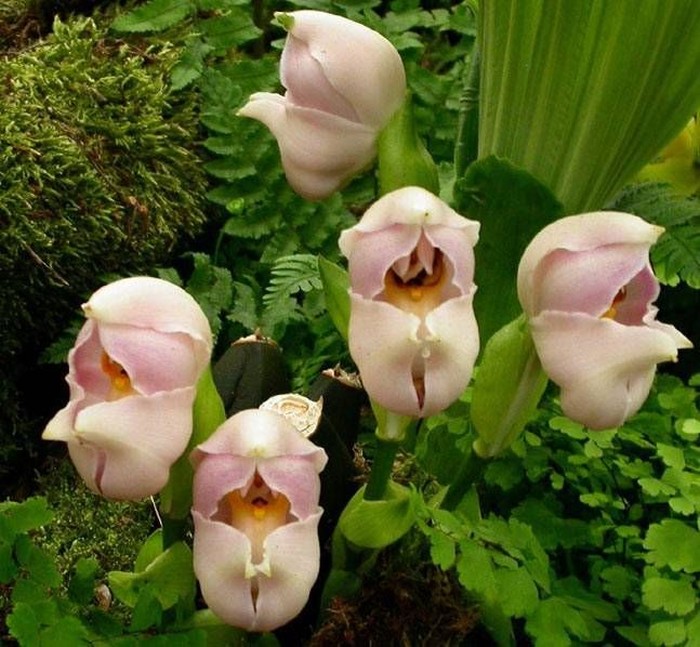
These lovely tiny baby-like tulip orchids were discovered in the Colombian Andes between 1777 and 1788 during a ten-year expedition, but they weren’t identified and legally classified until 1798. The blooms’ unusual forms mimic that of a newborn wrapped in white swaddling throughout specific stages of the plant’s flowering period. Insects are drawn to the hinged lip of the petal, where they are sucked into the column by their aroma. A swarm of pollen attaches itself to their abdomens, boosting pollination. These plants may also be grown at home.
Orchid of the bee (Ophrys apifera)

The remarkable similarity of this lovely little boy to a bumblebee gives him his name. The Bee Orchid is found throughout Europe, the Middle East, and even North Africa, but it is becoming increasingly uncommon due to its complex propagation mechanism. To thrive, the plant requires a symbiotic interaction with a certain species of fungus, making transplantation exceedingly difficult. This orchid is more cunning than it appears: the form of the bloom resembles the appearance and scent of a female bee, attracting male bees to mate with it, speeding up the pollination process!
Orchid of the Dove or Orchid of the Holy Ghost (Peristeria elata)
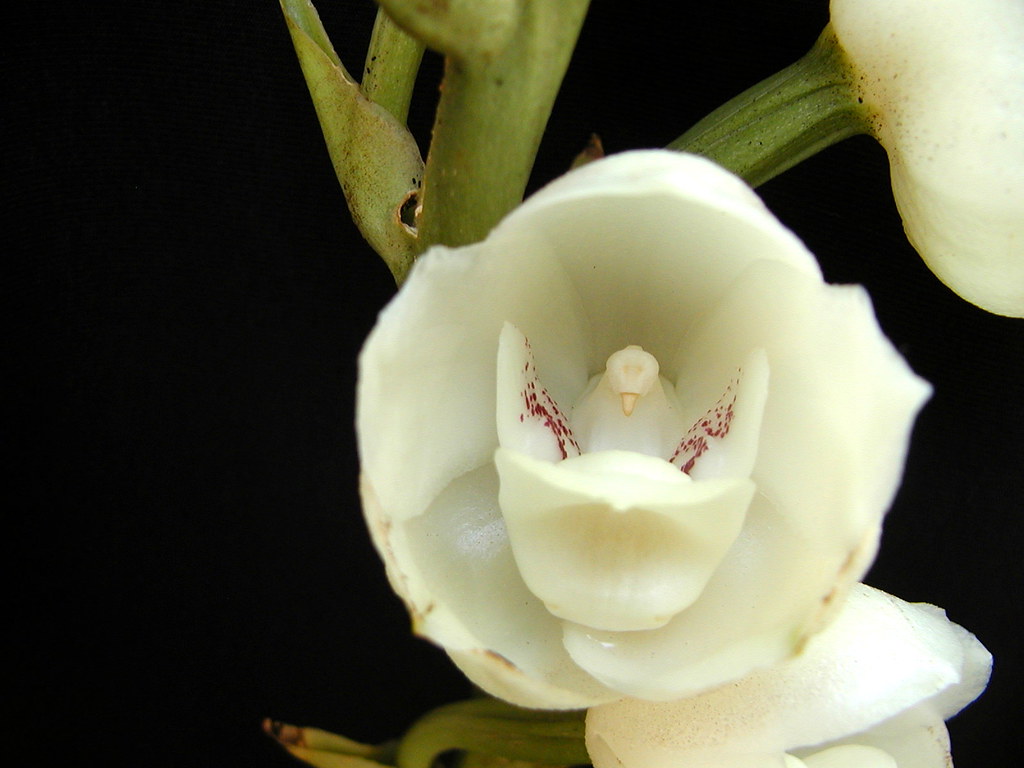
The Dove or Holy Ghost Orchid, which is native to Panama and the country’s national flower, has finely marbled white blossoms with a miniature dove with open wings resting inside. Unlike most other orchids, which grow on or near trees, this one grows on the ground, occasionally on rocks. The dove inside the blossom is so detailed that it appears to be carved out of ivory. Its alternative name, Holy Ghost Orchid, relates to the Holy Ghost’s appearance in the Bible as a dove. This orchid is so sought after and over-picked in its native country that it is now listed as endangered.
Pipe of a Brazilian Dutchman (Aristolochia gigantea)

This Brazilian native, sometimes known as the Giant Pelican Plant, resembles not only a pelican but also a Sherlock-style pipe that was popular in Holland (despite being located halfway around the globe). The flower has a horrible stench, despite its beautiful beauty, but that’s not the only thing that makes the Giant Dutchman’s Pipe unappealing. The Pipevine Swallowtail butterfly is perplexed by the plant, which it mistakes with its native host plant. The Dutchman’s Pipe, on the other hand, will not nourish the eggs of Pipevine Swallowtail butterflies and will only destroy the caterpillars.
Orchid of the monkey (Dracula simia)
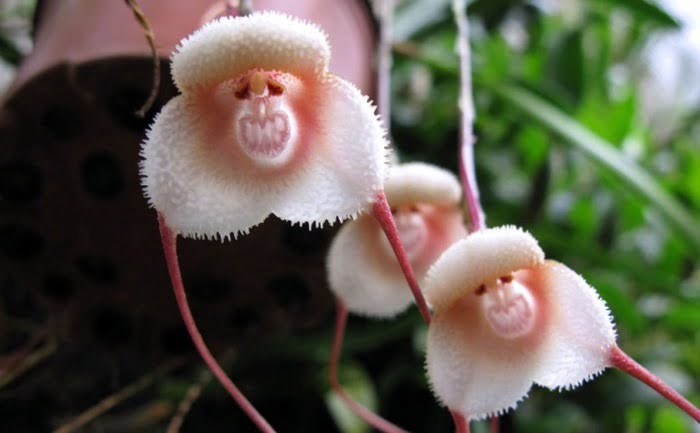

The Dracula orchid genus – often known as the “Monkey Orchid” – is a family of orchids with over 110 distinct kinds that have an eerie resemblance to monkey heads. The majority of Dracula Orchid Simia specimens were discovered at altitudes of more than 3,000 feet in the mountainous rain-forests of southern Ecuador and Peru. This unusual plant blooms all year and boasts blossoms that smell like ripe oranges, making it a cherished addition to any orchid enthusiast’s yard.
Flowering Parrots (Impatiens psittacina)
It’s not by chance that you’ve never seen a Parrot Flower. The plant is native to Thailand and is consequently prohibited from leaving the country due to its endangered status. The amazing thing about this unique species’ bloom is that when viewed from the side, it resembles a parrot in flight. So much so that when photographs of this flower first appeared on the internet, they were rejected as “digitally edited” or Photoshopped. But that’s partly because they’re exceedingly rare in the environment and it’s forbidden to remove them, so very few people have actually seen one.
Pod of Snapdragon Seeds (Antirrhinum majus)

The common name “snapdragon” comes from the flower’s peculiar reaction to having their necks compressed, which causes the flower’s “mouth” to open like a dragon’s. Once the Snapdragon has gone to seed, it produces “dragon skulls,” which is a lesser-known characteristic of the plant. Snapdragons were thought to have supernatural properties in ancient times, and that cultivating them in one’s garden would protect one’s house from curses and evil. One may argue that fighting fire with fire is the best way to go.
Moon Orchid with Tiger Face (Phalaenopsis amabilis)

Stripings and markings on flowers have developed in nature to either imitate bigger creatures to scare away predators or to resemble the genitals of insects to attract and spread the greatest number of pollinators. The Moon Orchid, one of Indonesia’s three national flowers, has stripes that are virtually identical to those of a tiger! It makes you wonder what type of animals this lovely flower is attempting to scare away.
Maids of the Chamber (Calceolaria uniflora)
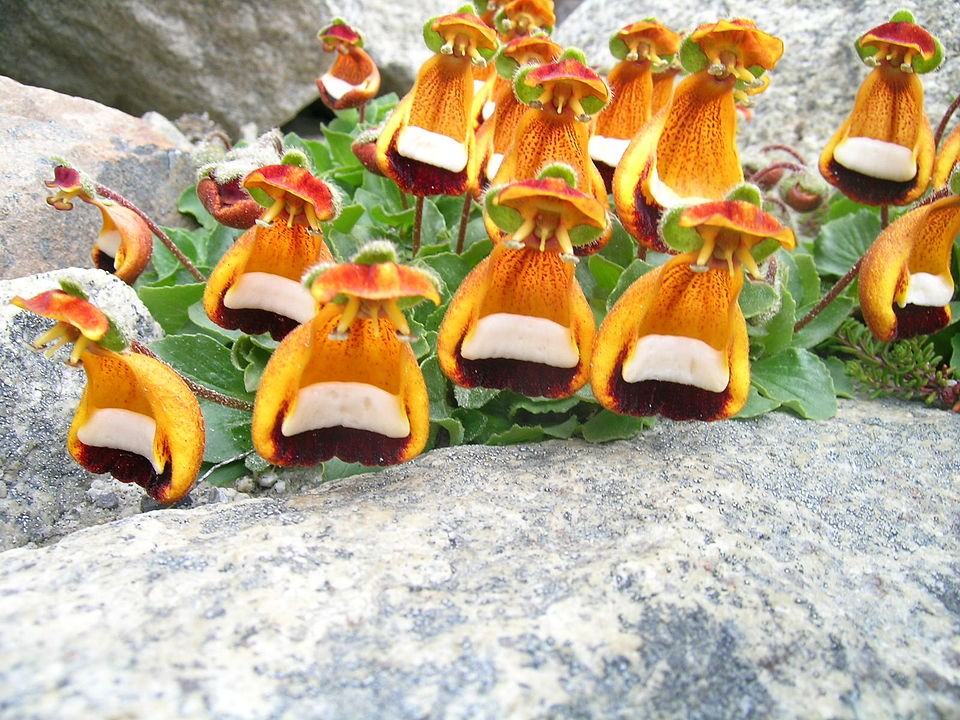
These tiny mountain blooms, also known as Darwin’s Slipper and the Happy Alien, are certainly one-of-a-kind. The Chamber Maids, first discovered by Darwin between 1831 and 1836, like cold weather and may still be found in large numbers in Tierra del Fuego, South America. Local birds are attracted to the little white “plate” area of the bloom, which they consume and collect pollen on their heads, assisting in the pollination of the plant. They also give the plants the appearance of little ladies dressed in maid’s aprons.
Orchid Angel (Zygopetalum rhein)

The Angel Orchid, named for its remarkable resemblance to an angel in a gown, was originally spotted in 1932 and is endemic to India’s grasslands. The Angel Orchid is a little orchid with a single heart-shaped leaf that lies flat on the ground, reaching just 5 inches in height. The flowers themselves bloom in clusters that can range from one to five orchid blossoms. They are the first orchids that bloom as the monsoon season approaches. It’s a fast-growing orhcid that has a lovely odor.
Orchid Fly (Ophrys insectifera)

The Fly Orchid is a common European orchid species that tends to reach between 11 and 15 inches tall. Its blossoms resemble little flies, complete with large, black bug eyes and everything. The plan’s name, on the other hand, relates to its capacity to attract flies and aphids. Its tuber may be dried and made into Salep, which is supposed to be highly healthy (although, we cannot be held liable for any negative consequences resulting from eating your orchids!).
Orchid of the White Egret (Pecteilis radiata)

When the white egret is in full flight, the White Egret Orchid, one of the most delicate and ornate orchids, resembles the bird after which it was named. It is one of the most unique orchids, making it a favorite among plant collectors and gardeners both. This wild orchid type is native to Asia, but it has also shown to thrive in the United States. The White Egret Orchid’s soaring bird-like flowers grow on a single spike, which may yield up to 10 separate blossoms and grow up to sixteen inches tall!
Moon Orchid Virgin Mary (Phalaenopsis amabilis)
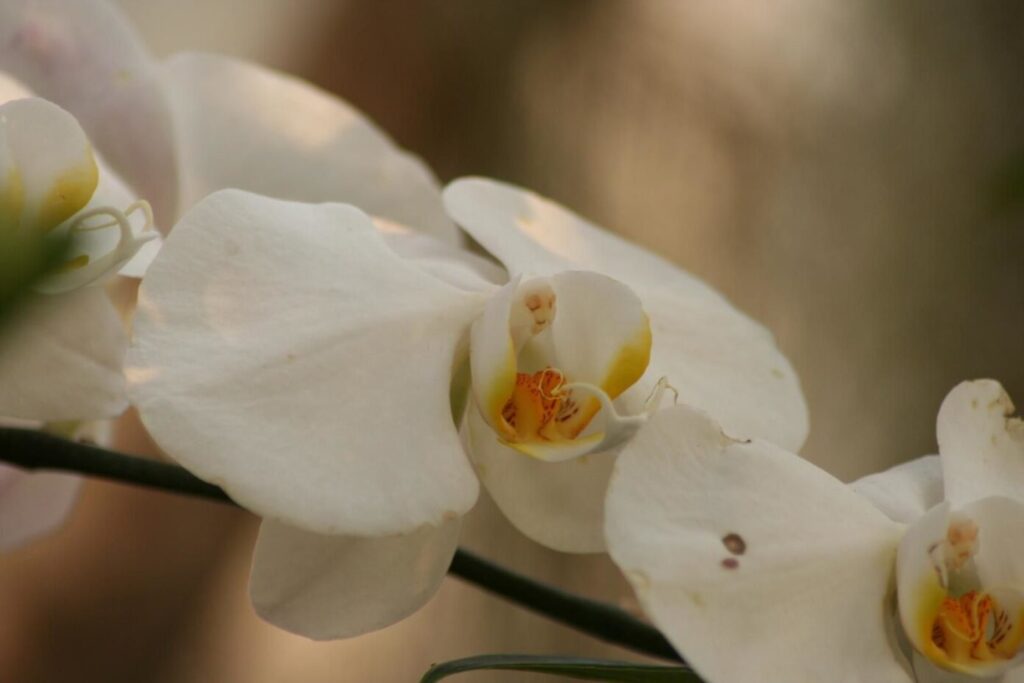
This coastal-loving orchid is nearly all white and looks to be a common Moth Orchid at first glance. However, upon closer investigation, it appears that a little sculpture of the Catholic Madonna has been inserted within. Because the bulbous bottom of the plant, as well as the pseudo bulbous area below new stem development, are hollow and packed with tunnels and caves, the Virgin Orchid is a great habitat for ants. But don’t worry, the ants aren’t going to eat your plant!
The Hand of the Devil (Chiranthodendron pentadactylon)

Idle hands are the devil’s workshop, especially when it comes to this rare orchid. The Devil’s Hand Orchid, also known as the Monkey’s Hand or Monkey Paw, is endemic to Mexico, where the Ancient Aztecs held it in particularly high respect, gathering the claw-like blossoms for years. This tree’s fruit has an earthy flavor and has been used in traditional medicine to treat heart disease and other cardiac problems. The Devil’s Hand, unlike some other orchids, is exceptionally durable and grows quickly, reaching heights of 40 to 90 feet!
Claw of a Lobster (Heliconia rostrata)

The lovely, colorful Lobster Claw would be a welcome addition to this collection of strange flowers that seem like something else. Lobster Claw, also known as False Bird of Paradise and Wild Plantain, has bright blooms that grow from bunches of leaves that resemble bananas. The plant’s genuine blooms, which need pollination by birds with specialized beaks, are hidden by the reddish flower-like bracts. The Lobster Claw is a great landscaping plant that grows up to 3.5 feet tall and blooms many times a year.
Do you know of any more plants that appear like they belong somewhere else? Please don’t be shy about sharing it in the comments!
